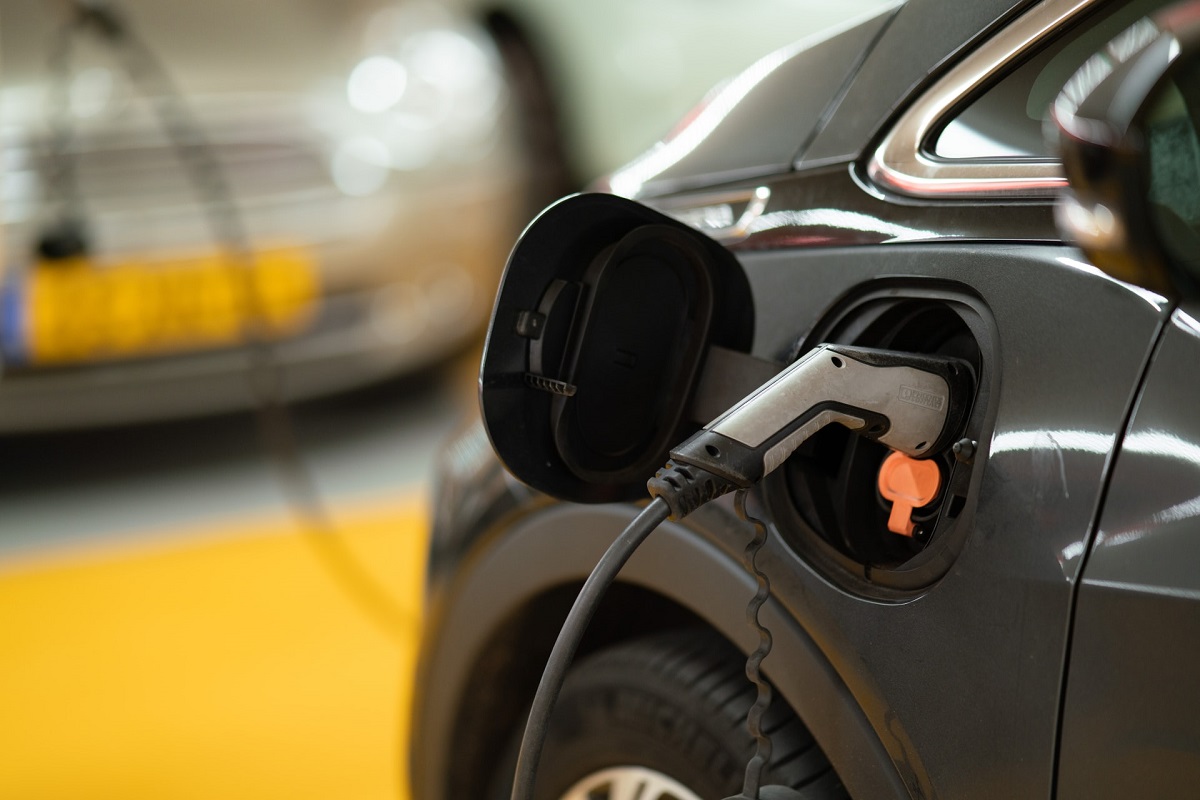With their high-energy density and long lifecycle, lithium-ion batteries have become the leading battery type for use in electric vehicles (EVs). However, they pose challenges to recyclers including cost, changing chemistry, and safety risks. Though EVs are still coming online, consumer and government interest signal a growing industry soon. ISRI and its members are working to prepare recyclers for the arrival of these batteries in their facilities.
Understanding EV Batteries
Lithium-ion batteries consist of extremely high-energy-potential material sandwiched between protective layers. Amounts of metals vary depending on the battery type and vehicle model, but a single car lithium-ion battery pack of a type known as NMC532 could have around 8 kg of lithium, 35 kg of nickel, 20 kg of manganese and 14 kg of cobalt, according to Argonne National Laboratory.
The battery’s layers include a battery management system (BMS), a cooling system, and armor, all of which gets installed as a battery pack. The layers are designed to prevent cell damage, which could cause cells to go rogue, also known as “thermal runaway.” When this happens, the cell has shorted and releases a large amount of energy and heat. A rogue cell can cause the electrolyte and cooling fluid to catch fire and set off neighboring cells. The resulting fire is hot and can melt aluminum.
The Challenge for Recyclers
Recycling EV batteries is not yet economically workable. Typically, recycling is only possible when recyclable materials have enough value to cover acquisition, processing, and logistics costs with a profit margin. “There’s been progress on the physical recycling side for recovering the metals, but the composition of the batteries continues to change,” notes Steve Levetan, executive vice president of Pull-A-Part. Cobalt is the most valuable of the recoverable metals. But battery manufacturers are looking to reduce cobalt due to reports of unsafe and unethical mining practices in the Democratic Republic of the Congo, where the material is primarily sourced. Reducing cobalt would also reduce the recovery value.
In addition to the lack of valuable metals, the chemical make-up of the batteries is an unknown factor. The chemistry can vary by manufacturer and can change from year to year and model to model. “Lead-acid batteries are pretty straightforward,” Levetan says. “We know what it is and what’s in it. [EVs] continually change, so proper labeling, proper identification, and proper dissemination of the data is absolutely critical to effectively removing and reusing the batteries and for the safety of our people.”
Safety Concerns
Given the high risks of a thermal runaway, lithium-ion batteries must be removed from vehicles before shredding. But removing the battery is not easy. “We can easily and safely remove the lead acid battery in a gas-powered vehicle,” says Jeff Farano, corporate counsel at SA Recycling headquartered in Orange, Calif. “But EV- batteries are integrated into the car, so they can be dangerous to remove.” Since the batteries can be up to 900 volts, incorrectly handling them could have fatal consequences.
Atlanta-based Pull-A-Part, a U.S. chain of automotive recycling yards where customers bring tools to remove parts from used vehicles, has handled lithium-ion batteries in hybrids and EVs. “Hybrid is shifting over from nickel metal hydride to lithium-ion so it’s becoming an issue there as well,” Levetan says.
With EV batteries coming into the yards from total-loss vehicles, the company has taken several steps to ensure its customers’ and employees’ safety. Before vehicles enter the yard, employees remove the lithium-ion batteries. They wear special safety equipment to combat potential electrical hazards. “We use the same gloves as the power company line,” Levetan explains. “The gloves are periodically tested because even a pinhole can be enough to allow the current to pass to an employee.”
Employees receive training on how to store and remove the batteries, so the entire process is done with great care. “It’s not like you can pull a chain around a motor and lift it out,” Levetan says. Pull-A-Part has specialized crews that train on handling hybrid vehicles. “While the battery is smaller [in a hybrid] and less of a problem, there’s still the electrical issues and sparking potential,” he adds.
Recyclers incur significant costs when transporting, shipping, and packaging these batteries. “They’re currently considered to be a hazardous material, which requires specialized carriers and packaging, which all add tremendously to the cost,” Levetan explains.
Farano notes that these costs discourage, if not make it impossible for recyclers to buy EVs “Buying these vehicles and removing their batteries take a significant amount of labor, and that’s an additional cost we don’t incur in gas cars.”
Designing with Recycling in Mind
Designing EV batteries with recycling in mind would make a big difference, says Justin Short, ISRI’s manager of government relations. “That’s what ISRI is pushing for, that there should be consideration for end-of-life and how recyclers can safely remove and recycle the batteries. Consideration should also be given to designing EV batteries in a way the make them safe to handle and easier to remove.”
ISRI has worked with many groups about recycling or reuse of EV batteries, including NAATBatt International, Suppliers Partnership for the Environment, ReCell Center, and the National Renewable Energy Laboratory (NREL). “In these relationships, ISRI points out the environmental, health & safety, and economic challenges presented by EVs and [electric vehicle batteries] to auto dismantlers and shredders that take vehicles directly,” says David Wagger, ISRI’s chief scientist.
Terry Adams, executive vice president of business development at SA Recycling, sits on the California Environmental Protection Agency’s Lithium-ion Car Battery Recycling Advisory Group, and represents vehicle recycling and dismantling. The group advises the California State Legislature on polices about the recovery and recycling of lithium-ion vehicle batteries sold with motor vehicles in the state. Formed in 2019 in response to Assembly Bill 2832, the group is led by CalEPA, the state Department of Toxic Substances Control (DTSC), and the state Department of Resources Recycling and Recovery (CalRecycle).
Over the past year, the advisory group has received input on EV batteries and challenges they pose from environmental agencies, battery recyclers, car manufacturers, EV manufacturers, metal battery recyclers, and battery manufacturers. The advisory group is drafting comments and will present them in 2023. “These comments should help form new legislation or polices or new regulations,” Farano notes.
Rather than creating new infrastructure to collect and handle batteries, Levetan recommends auto manufacturers take advantage of the fact that auto recycling industries are the ultimate collection and accumulation of EV batteries. “Virtually every vehicle ends up going through an auto recycler, our industry is the solution to the collection infrastructure so that’s a valuable asset we bring to the table, we just need to be adequately and appropriately compensated.”
Farano says that working with auto recyclers in creating a business around removing the batteries may help make recycling them more economical. “It could be a future incentive producer responsibility requirement for companies that produce EVs. Rather than bringing the cars back to dealership and removing the batteries, manufactures could set up a program for dismantlers and auto vehicle recyclers to remove the batteries, resell or recycle the batteries and recycle the vehicle. But the EV has to be designed in a way the makes this safe and financially feasible.”
Additional Resources













